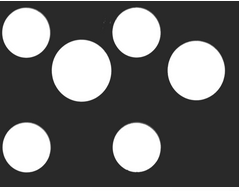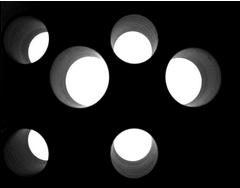Telecentric lenses
Starting from your sensor, select the desired object field x*y [mm²].
Decide on a working distance and, if necessary, other special features of the desired lens.
In the list below the product filter you will find all the lenses that are suitable for your application.
Description
Starting from your sensor, select the desired object field x*y [mm²].
Decide on a working distance and, if necessary, other special features of the desired lens.
In the list below the product filter you will find all the lenses that are suitable for your application.
Advantages of telecentric optics over conventional entocentric optics
Conventional or also entocentric lenses image in perspective. This means that not all areas to be inspected can be visible. With a telecentric lens, look vertically at your object throughout the image – this avoids unwanted edge occlusions.
The most important application of telecentricity is optical metrology. Due to the telecentric principle, sharp edge transitions of the test parts can be displayed and these can be measured with high precision.
In this case, diffuse lighting causes the edges to become more washed out, which makes them more difficult to measure accurately.

With telecentric illumination and imaging, the upper and lower bore diameters appear the same size and without perspective obscurations.

The perspective image of the perforated plate leads to apparently different hole diameters at the top and bottom and also to the lower hole being obscured.
The telecentric perspective allows all honeycomb cross-sections of the 100 mm high ceramic body to be checked for continuity.
Perspective imaging with an entocentric lens allows only a few honeycomb cross-sections to become visible.
Selection
